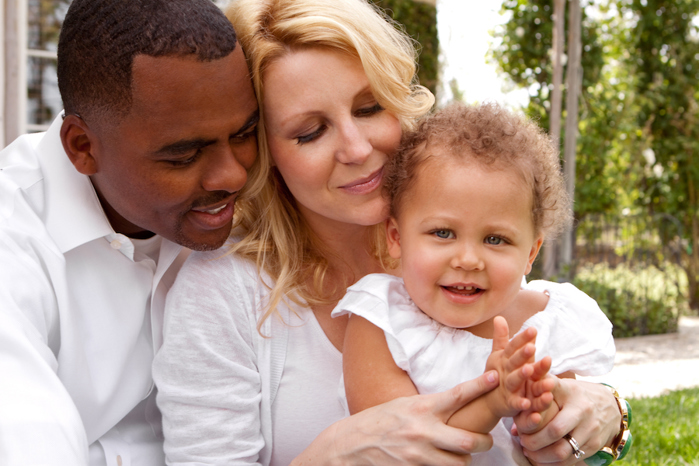I look more like my father; did I get his genes?
August 19, 2004
- Related Topics:
- DNA basics,
- Genetic myths,
- Appearance,
- Dominant and recessive,
- Relatedness,
- Classical genetics
A curious adult from Mississippi
"Hi. I am a 28 year old female and I was wondering do females get their father's or their mother's genes? It seems like I am mostly like my father but I don't know -- can you help me with this?"
Editor’s note (5/20/2021):This article suggests that some human traits, including curly vs. straight hair, are determined by one or a few genes acting in a Mendelian fashion. We now know that most human traits are controlled by many genes acting in ways that are not completely understood.
It is common to look more like one parent than the other, but that doesn't mean you only get genes from that parent. You get all of your genes from both parents. We have two copies of every gene--one we inherited from our mother, the other from our father*.
There are also different versions of the genes that are called alleles. An allele is a form of a gene that can give you a certain trait. For example, there are two different forms of a certain hair gene — one gives you straight hair and the other gives you curly hair.
Okay, so you get one copy of a gene from your mom and one from your dad. How do you end up looking like you do? Are we a blend of our genes or do certain copies of a gene win out? How did you end up looking more like your dad than your mom?
The answer is that usually one version of a gene trumps another. In the 1860's, a Czech monk named Gregor Mendel first came up with the idea of alleles. His groundbreaking work on sweet pea plants showed that the gene for seed shape in the sweet pea came in two forms or alleles, round and wrinkled.
That isn't all this industrious monk figured out. He also realized that if a plant had a round form and a wrinkled form of the seed shape gene, it would always have round peas. The round allele is dominant over the wrinkled allele is how a geneticist would say it.
This idea of dominance might help explain why you look more like your dad than your mom. If your dad has mostly dominant genes for how you look, then you might end up looking more like your dad.

Of course, nothing is that simple. How a trait physically shows up in you (your phenotype) is a result of your genotype. And your genotype is composed of all the different alleles you inherited from both parents.
Your looks such as the shape of the nose and face, and eye color are the result of complex interactions between large numbers of different alleles. While our understanding of genetics has come a long way since Mendel, scientists are still better at understanding phenotypes that result from the interaction of a limited number of alleles.
An example of this is human blood type (see Table). There are four possible phenotypes (A, B, AB, and O) that result from the three alleles for the gene that determines blood type. The three alleles are: IA, which codes for type 'A' blood; IB, which codes for type 'B', i, which codes for type 'O' blood. As you can see from the table there are six genotypes that code for the four different phenotypes. Both IA and IB are dominant alleles while i is recessive. Type AB blood results from codominance of alleles IA and IB.
|
GENOTYPES |
PHENOTYPE |
|
IAIA |
Type A |
|
IBIB |
Type B |
|
IAIB |
Type AB |
|
ii |
Type O |
Blood type is a simple example of a single gene with multiple alleles leading to an even greater number of phenotypes, as you might imagine your resemblance to your father likely involves hundreds of genes. And each of these genes may have multiple alleles. The interactions (dominance, recessive, and codominance to name a few) between the alleles you've inherited from your mother and father result in you being more like your father.
*The exceptions to this rule are genes on the Y chromosome, which, if you are a man, you only get from your father and the "mitochondrial" genes that everyone gets only from their mother. In addition, if you are male, you only get 1 copy of all the genes on the X chromosome.
Author: Dr. Colin Davidson
When this answer was published in 2004, Colin was a postdoctoral fellow in the Department of Genetics, studying evolution and function of the Myb gene family in Joseph Lipsick’s laboratory. Colin wrote this answer while participating in the Stanford at The Tech program.
 Skip Navigation
Skip Navigation
